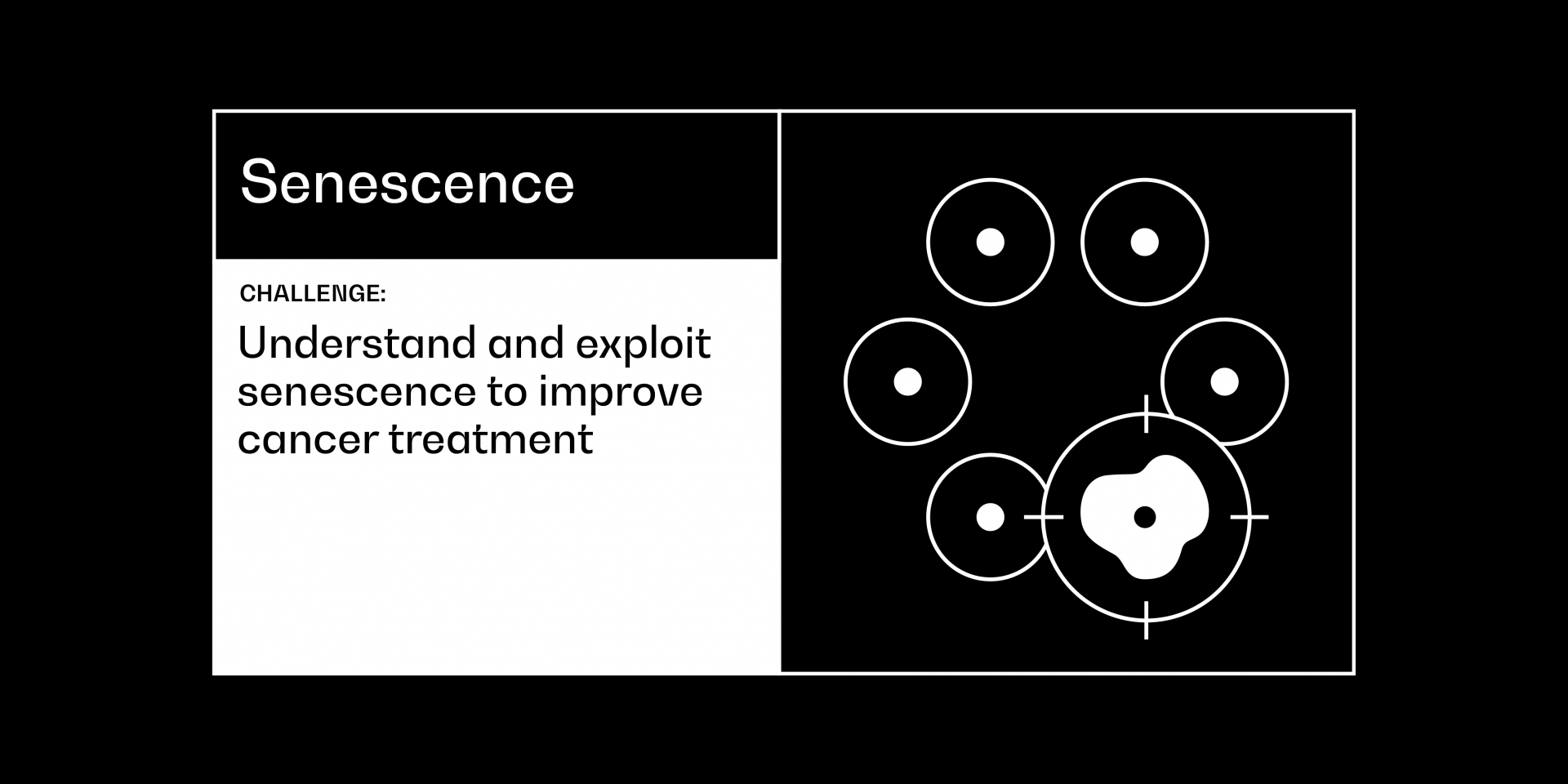
Senescence
Challenge: Understand and exploit senescence to improve cancer treatment
This was a challenge in an earlier round, we are not currently accepting applications for this challenge.
Context
Senescence is an effective endogenous anti-cancer mechanism, e.g., BRAF mutated induced senescence in melanocytes in naevi. Much of the research on senescence is carried out in non-malignant primary cells, but evidence suggests that cancer cells can still enter senescence. One of the shared properties of senescent cells is the Senescence Associated Secretory Phenotype (SASP), which leads to a local inflammatory response. The altered cellular state of the senescent cell in terms of gene expression, metabolism and chromatin state offers potential opportunities to selectively eradicate senescent cancer cells (senolysis). The challenge is to induce senescence in cancer cells and identify ways to selectively kill the senescent cancer cells.
Barriers and opportunities
A major barrier in the field is that there is not a gold standard biomarker of the senescent state, certainly not in cancer cells. There is an urgent need to identify reliable biomarkers that identify senescent cancer cells. This will enable high throughput technologies to identify genes and compounds that effectively induce senescence in cancer cells. Senescence has not yet been used as a read out in compound screens by the pharmaceutical industry, and hence, has been missed in short-term read outs in large drug screens.
Another barrier is that the few available senolytic compounds have context dependence, which limits their use. It will be important to identify common vulnerabilities of senescent cancer cells that can be used for their ablation. Ablation of senescent cells may also take advantage of the SASP produced by senescent cancer cells, e.g., by combinations with immuno-oncology approaches.
Ablation of senescent normal cells may also be considered as a way to reduce the side-effects of chemotherapy in patients.
Examples of the types of questions that could be addressed in this challenge include but are not limited to:
- What are the common vulnerabilities of senescent cancer cells and how could these features be targeted?
- Can we develop novel or more effective approaches to effectively induce senescence in cancer cells?
- What is the best approach to remove senescent cells?
- What is the physiological impact of inducing senescence and/ or removing senescent cells more widely in the context of tumour development?
Vision and Impact
This challenge invites innovative approaches to identify novel compounds and targets that either induce senescence in cancer cells and/or approaches that can be used to kill senescent cancer cells. Validation of the identified compounds and targets in appropriate immunocompetent animal models will be instrumental for validation of the proposed therapies.
To address this challenge, a multidisciplinary team will be required, bringing together researchers from disciplines such as biology, chemistry, drug discovery, pharmacology and clinical oncology. Ideally, the challenge should culminate in a proof of concept clinical study to demonstrate the utility of the approach in patients.
Plain language summary: Why senescence?
When cells are put under stress, such as when their DNA is damaged, they can enter a state called senescence, in which they stop dividing. This state can act as a safety mechanism to stop faulty cells from multiplying.
Senescence can help protect us against cancer as it forces would-be cancer cells to stop dividing before it’s too late. Research suggests that cancer cells can become senescent too, halting their growth. This raises important questions: can we trigger senescence in cancer cells? And can we find ways to target and eradicate these cells from the body?
For this Cancer Grand Challenge, we are looking for a multidisciplinary team to come together to better understand senescence and find new ways to manipulate this process to eliminate cancer cells from the body.